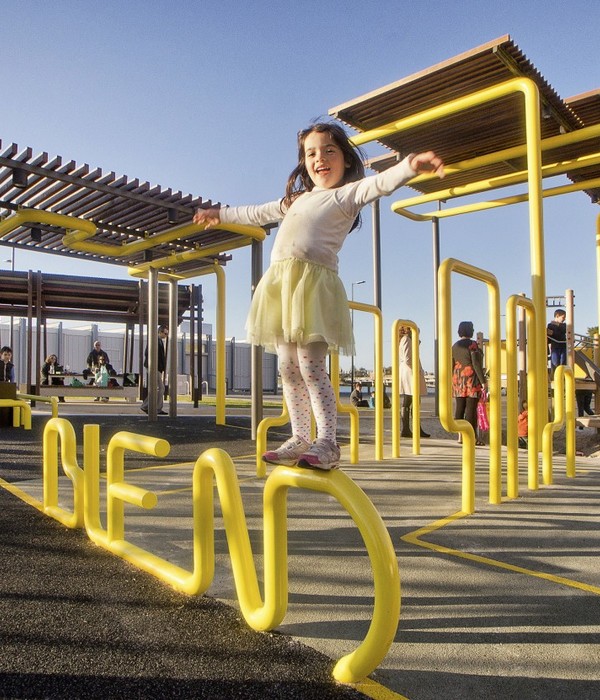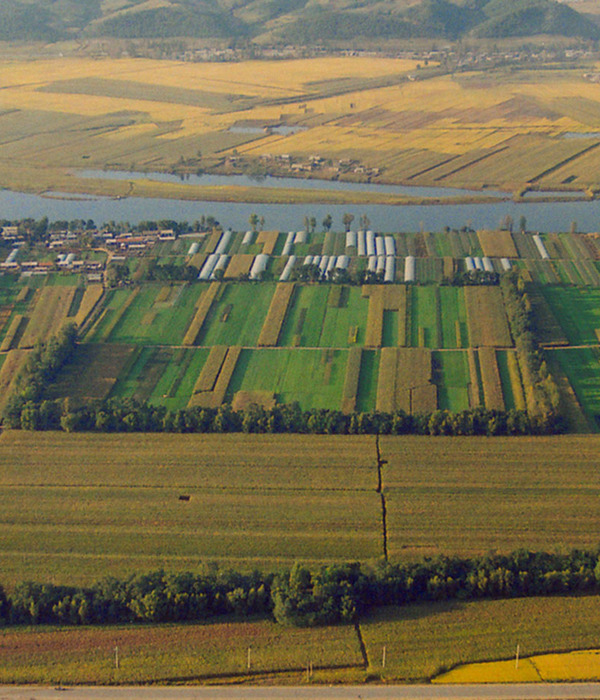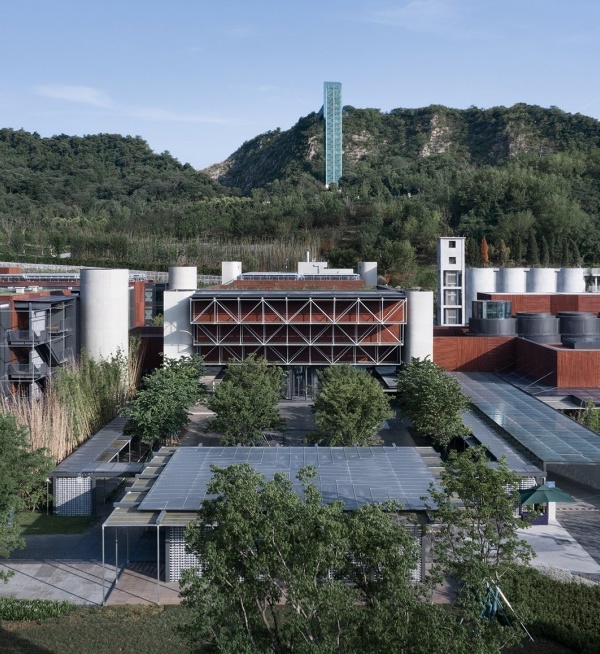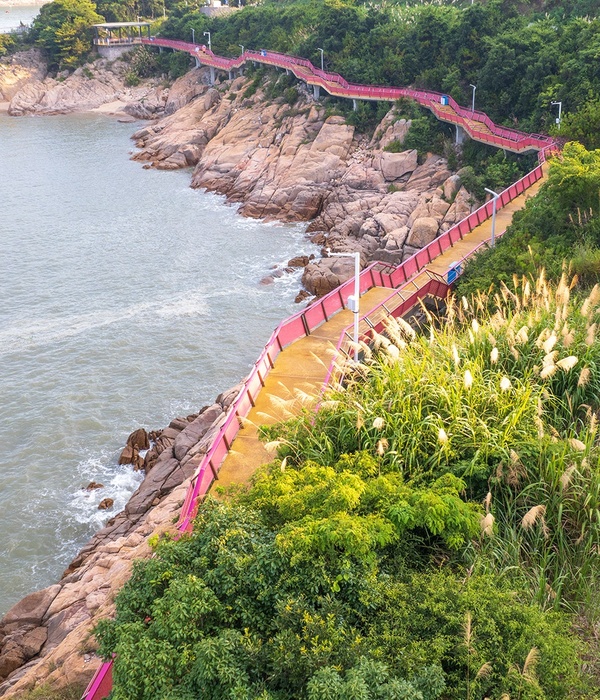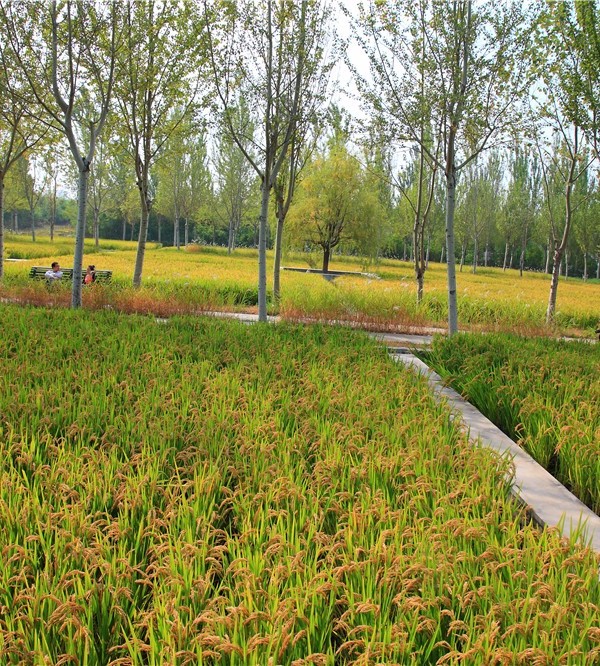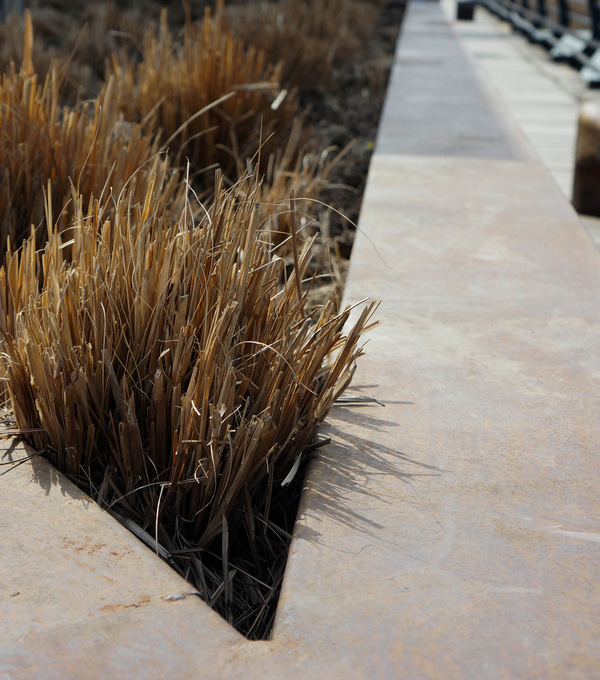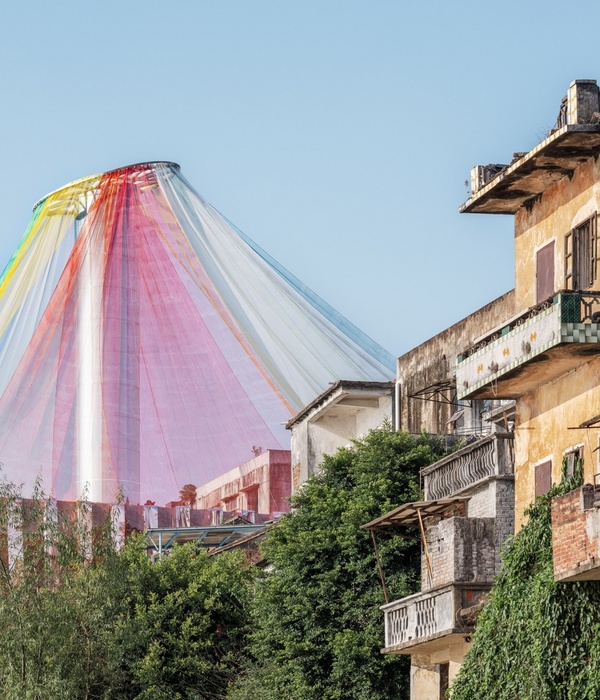Architects:TJAD Original Design Studio
Area :6939 m²
Year :2019
Photographs :ZY Architectural Photography
Lead Architects :Ming Zhang, Zi Zhang
Design Team : Xunan Wang, Chun Ding, Kuo Ding, Xiang Wang, Yang Yue, Kongshen Xia, Xufeng Wang, Boheng Li (Intern)
Structural Team : Branch Urban Environment, TJAD
Structure Engineers : Zhun Zhang, Rui Wang
Facility Engineer : Department No.1 TJAD
Client : Shanghai Landscaping & City Appearance Administrative Bureau
City : Shanghai
Country : China
Jiuzi Park is named after nine kinds of alley games, including pulling bells, jumping tendons, rolling wheels, billiards, knotting, hopscotch, circling, thumping, top core and so on. It is located at No. 1018 North Chengdu Road, near the south bank of Suzhou River in Huangpu District. It is surrounded by creative industrial parks and dense residential areas with its relatively outdated internal facilities. In the promotion of the public space of Suzhou River, Jiuzi Park, as the junction of Huangpu District and Jing'an District, is a rare spot for public space in dense urban areas, and has become an important node in the linear landscape of Suzhou River.
It starts with the idea of open city park for Jiuzi Park has a close relationship with the surrounding areas as well as the riverfront space on the north side has a large hinterland and thus the possibility of extension. We open the defense wall of the park, integrate it with the riverside public space, and form an interwoven space with the green terrain so as to improve the accessibility of the park and make park life a daily activity for citizens.
The riverfront space on the north side of Jiuzi Park forms a water platform through the installation of a secondary flood control wall. When it opens the flood control gate, it allows the park further extended along the riverside, enriching the garden experience and making the park more closely linked with Suzhou River.
The paving of the park is the same as that of the riverfront public space, using colorful prefabricated glass terrazzo blocks. The different colors suggest different functions with orange representing the main circulation, green the green space, blue the hydrophilic space, and gray as the transition between colors, together forming an abstract collage like a "mosaic", which also echoes the exquisiteness of the river bank. The orange color of the main circulation of the park crosses the city road and connects to the orange pavement of the riverfront, which also strengthens the openness of the park.
Jiuzi Park is rich in color and narrative with the park inn, pavilion toilet, and floating platform forming a unified movement made of fair-faced concrete. The park inn, also known as Paper Kite House, uses tilted and folded fair-faced concrete to obtain structural rigidity, which combines the functions of the park station with the administrative office. The huge canopy is iconic in the urban space and strengthens the park's image.
In the transformation of the public toilet, we use orthogonal folding paths on the basis of preserving the original area to achieve the space effect of a pavilion integrating semi-public space, courtyard and corridor. The equipment house, administrative office and toilets become "small boxes" wrapped in anodized aluminum, interspersing between the folded plates. Along the urban side, a rest space covered with capopy is formed. Visitors can sit and rest temporarily when passing by. They can enjoy the atmosphere of the park without entering the park. It is another expression of the park space open to the urban space.
The floating platform and the bamboo forest at the rear conceal the pump room infrastructure. It is imagined as a “super fair-faced concrete furniture” that integrates low walls, seats, and tables. People can climb, cross, sit, and sleep. For gatherings, the multi-sense space inspires people's imagination of how to use them.
▼项目更多图片
{{item.text_origin}}





